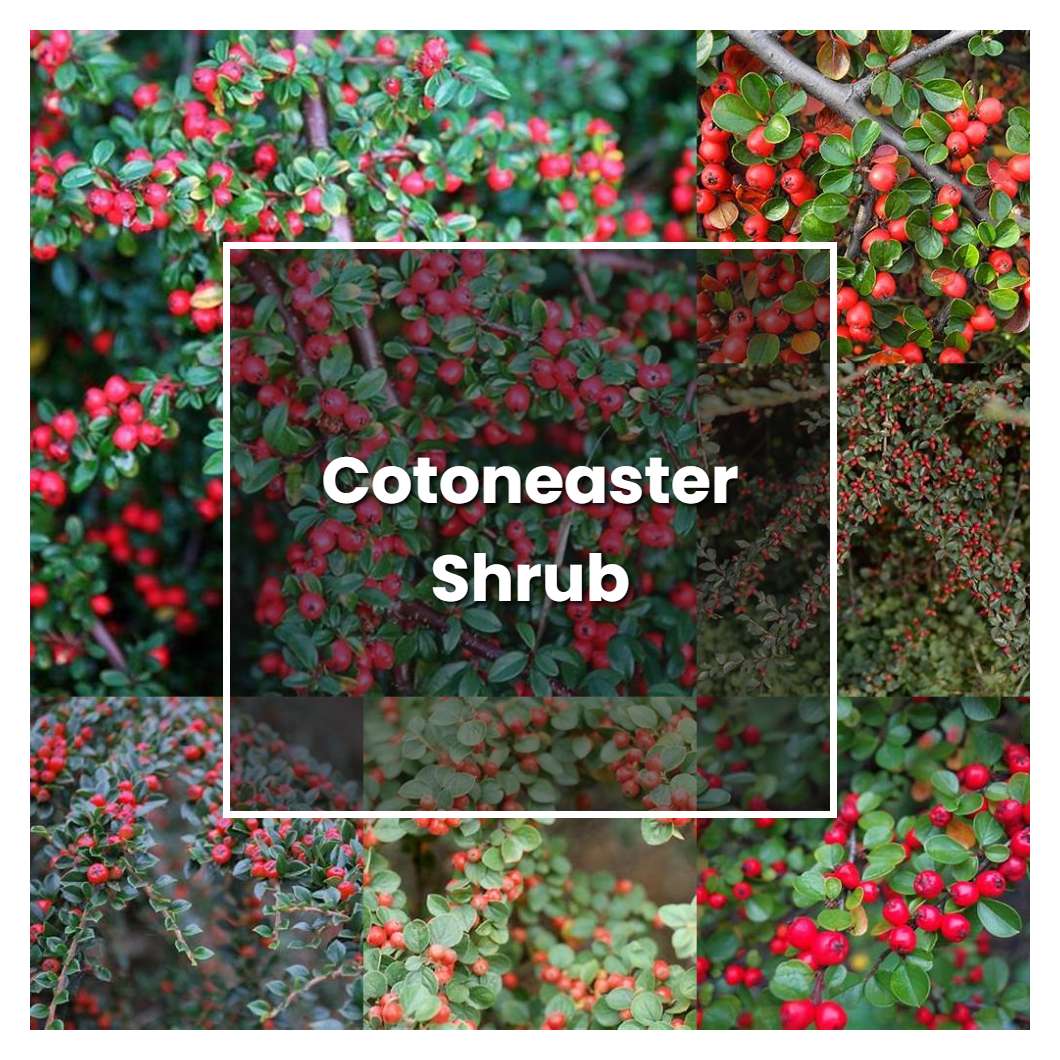Cotoneaster shrub is a plant that is native to China and Japan. It is a member of the rose family and is related to the crabapple. The cotoneaster shrub is an evergreen and has small, white flowers that bloom in the spring. The fruit of the cotoneaster shrub is a red berry that is poisonous to humans but is popular with birds.

Related plant:
Cotoneaster Salicifolius
Related plant:
Cotoneaster Berries
About soil condition, cotoneaster shrub prefers well-drained, loamy soil mix with a slightly acidic to neutral pH range of 6.0 to 7.5. It is not too particular about soil type, but does not do well in overly wet or poorly drained soils. This shrub is also tolerant of clay soil.
Like the other plants, cotoneaster shrubs need sunlight to grow and stay healthy. However, how much sunlight they need depends on the specific type of cotoneaster shrub. Some types need full sun, which means they need to be in an area that gets direct sunlight for most of the day. Other types can tolerate partial sun, which means they need some direct sunlight but can also grow in an area that has some shade.
The temperature condition that is best for the cotoneaster shrub is one that is cool and moist. This shrub prefers temperatures that are between 60 and 75 degrees Fahrenheit. It can tolerate some cold, but not freezing temperatures. It also does not do well in hot and dry conditions.
Ideal humidity condition for this plant is 40 to 60%. If the humidity drops below 40%, the leaves will start to turn yellow and fall off. If the humidity is too high, the leaves will start to droop and the plant will not be able to produce new growth.
About fertilizer, this plant prefers a high-phosphorus fertilizer in early spring. A general-purpose fertilizer can be used later in the season. For best results, use a fertilizer specifically formulated for cotoneasters. The root system of cotoneasters is generally shallow, so they benefit from a layer of mulch to help retain moisture and moderate soil temperatures. An organic mulch, such as shredded bark or compost, is ideal. Keep the mulch several inches away from the trunk of the plant to prevent collar rot.
Pruning a cotoneaster shrub is a simple process that can be done with a pair of sharp pruning shears. First, remove any dead or damaged branches by cutting them back to the point of healthy growth. Next, cut back any leggy growth to promote a fuller, more compact shape. Finally, trim back any branches that are rubbing against each other or crossing over one another.
Propagation : Cotoneaster can be propagated by seed, softwood or semi-ripe cuttings, or layering. Seed: Sow seed in a cold frame in early spring. Protect from birds. When seedlings are large enough to handle, transplant into individual pots. Softwood cuttings: Take cuttings from new growth in late spring or early summer. rooting hormone will improve strike rate. Place in individual pots filled with a moistened, well-drained potting mix. Place in a propagator or seal the pot inside a clear plastic bag to maintain humidity. Semi-ripe cuttings: Take cuttings from new growth in mid to late summer. Cuttings should be taken from the base of the plant, just above a leaf node. Use a sharp knife or garden shears. Dip the cutting in rooting hormone and plant in a moistened, well-drained potting mix. Place in a propagator or seal the pot inside a clear plastic bag to maintain humidity. Layering: Layering is best done in late spring or early summer. Choose a low-growing branch and strip off the leaves from a section of the stem. Make a small slit in the soil beneath the plant and lay the stem on top,weighting it down with a stone if necessary. Cover the wound with soil and keep the area moist. Roots should form within a few weeks. Once roots have formed, sever the stem from the plant and pot up.
Usually, the plant growth rate is fast, with some species growing more than 3 feet in a single season. However, some cotoneaster shrubs are slow growers, only reaching 1 to 2 feet in height over the course of several years.
Common problems for this kind of plant are aphids, leaf spot, and fireblight. Aphids are small, soft-bodied insects that feed on the sap of plants. They can cause the leaves of the cotoneaster shrub to turn yellow and drop off. Leaf spot is a fungal disease that causes spots on the leaves of the cotoneaster shrub. Fireblight is a bacterial disease that can kill the leaves, stems, and flowers of the cotoneaster shrub.
Source:
Cotoneaster divaricatus (Spreading Cotoneaster) | North Carolina ...
Cotoneaster lucidus | Landscape Plants | Oregon State University
Managing Pests in Gardens: Trees and Shrubs: Cotoneaster
